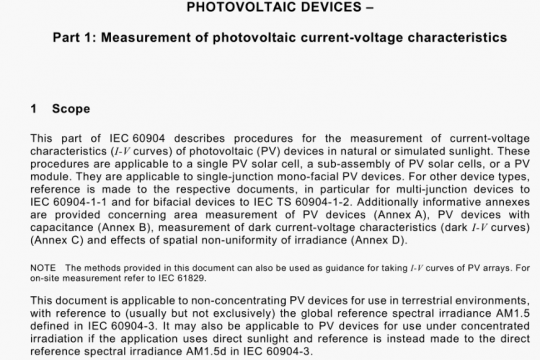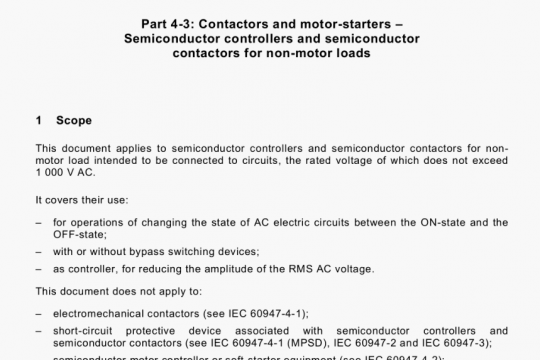ISO/IEC 14543-3-10-2012 pdf free
ISO/IEC 14543-3-10-2012 pdf free.Information technology – Home electronic system (HES) architecture – Part 3-10: Wireless short-packet (WSP) protocol optimised for energy harvesting – Architecture and lower layer protocols.
5.1.2 Physical layer
At the physical layer the data are transmitted on either the 315 MHz or the 868,3 MHz frequency band with 125 kbit/s data rate using amplitude shift keying (ASK). The functional distance of the system is up to 300 m line-of-sight including the Fresnel zone and up to 30 m in buildings. This may be subject to national regulations. One bit duration is 8 is. The data are transmitted in frames. A frame consists of the preamble (PRE), the start-of-frame sequence (SOF), the subframes (with inverse (INV) and synchronisation (SYNC) bits) as well as the end-of-frame sequence (EOF). For further details see Clause 6.
5.1.3 Data link layer
A subtelegram is the part of a frame from which the preamble (PRE), start-of-frame (SOF), inverse bits (INV), synchronisation bits (SYNC) and end-of-frame (EOF) have been removed. The subtelegram is transferred to the data link layer where the data integrity of the subtelegram is checked. If the data integrity check fails, the subtelegram is discarded. An additional task of the data link layer is to manage the subtelegram timing of the received/transmitted subtelegram. The subtelegram timing is based on an algorithm that ensures that the probability of subtelegram collisions in transit is as low as possible. To reduce the collision risk the WSP protocol uses, if possible, a listen before talk (LBT) technique. This algorithm (see 7.4) ensures that no transmission is initiated while the wireless channel is occupied.
5.1.4 Network layer
Three tasks are performed at the network layer, namely a conversion process, a repeating process and potentially a targeting process. The former performs a conversion between switch and normal telegrams (see 8.2). The repeating process is used when the wireless signals are too weak to reach the receiver directly and involves intermediate devices, i.e., repeaters that have been installed between the sender and the final recipient of the wireless signal (see 8.3). Another process at this layer involves a telegram that contains target addresses. Most telegrams are broadcast, and thus contain no destination identity (DESTID). However, if a telegram is addressed, it is in an encapsulated format (see 8.4).
5.1.5 Transport layer
This layer is not described in this standard.
5.1.6 Session layer
This layer is not described in this standard.
5.1.7 Presentation layer
This layer is not described in this standard.
5.1.8 Application layer
This layer is not described in this standard.
5.2 Data unit description
The communication protocol is packet based and the data units can be of three different types:
• Frame
• Subtelegram
• Telegram
A frame is the representation of the encoded data on the physical layer. It includes control and synchronisation information for the receiver, A frame is transmitted as a bit by bit serial sequence. A subtelegram is the result of a decoding process, in which this control (PRE, SOF, INV and EOF) and synchronisation (SYNC) data are removed from the frame. The reverse mechanism to extract a frame from a subtelegram is the encoding process.
Subtelegrams are processed at the data link layer. The WSP protocol is designed to work mostly as a unidirectional protocol without handshaking. To ensure transmission reliability up to three identical subtelegrams are transmitted within a specified time range. Each transmitted subtelegram is an atomic unit and contains all the data that the composed telegram contains. The data structure of a subtelegram is shown in Figure 1, where each byte is represented by 8 bits.ISO/IEC 14543-3-10 pdf download.




